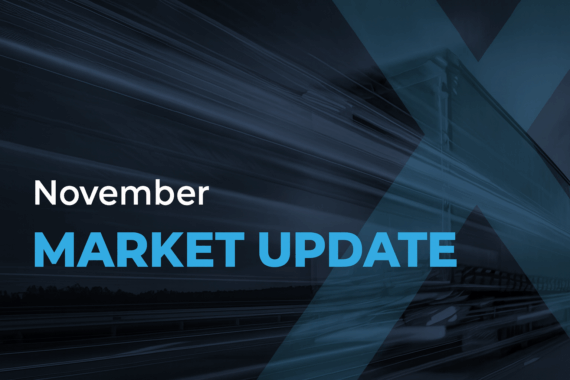MEDIA CONTACT:
Bailey Warlen
(913) 279-0182
bwarlen@kompasskapital.com
Labor shortages disrupting the supply chain prompt businesses to lean on technology for support
Exacerbated by COVID-19 and the fear of an economic recession, the demands of the global supply chain placed manufacturers on the frontlines with fewer resources and fewer employees to evenly distribute the workload.
Pre-pandemic, most of the population outside of shipping and manufacturing industries didn’t know what the supply chain was; now, it’s a household term. And it’s having a big impact on the health of our economy and potentially your business.
Manufacturing companies are facing a historic employee shortage that shows no sign of slowing down. The U.S. Bureau of Labor Statistics recently reported 5 million more job openings than there are unemployed people in the U.S. Specifically, the manufacturing and transportation industries saw a combined opening of 1.3 million jobs. Supply chain managers quit their jobs last year at the highest rate since at least 2016 due to a mix of burnout and a desire for higher paychecks, and the separation rate increased by 28% from 2021, according to Bloomberg Law.
These labor shortages have caused a gigantic kink in the supply chain, decreasing productivity, extending wait times for industries – most notably transportation and logistics, travel and food services, construction, retail and e-commerce fulfillment and delivery – whose overall success depends on a healthy supply chain.
The causes of manufacturing shortages
Burnout, turnover and workplace safety: Even before the pandemic’s arrival in late 2019, manufacturing bandwidth was already stretched thin, according to a published BLS report in November of 2020 that highlights declining industry employment over the past 40 years.
Exacerbated by COVID-19 and the fear of an economic recession, the demands of the global supply chain placed manufacturers on the frontlines with fewer resources and fewer employees to evenly distribute the workload. Without the luxury of working remotely, the mental and physical fatigue and stress employees have experienced over the last two years is real and withstanding this degree of prolonged pressure is nearly impossible. These conditions, understandably, make attracting and retaining talent problematic. Among the list of hiring obstacles leaders have identified are poor onboarding and training for new hires, lack of job security and career growth, misaligned candidate expectations and a skills gap.
The NAM Manufacturing Outlook Index Data recently reported that 64% of manufacturers say their existing workforce has had to work more, likely with increased overtime; 78% said the most difficult skills to fill in 2022 and beyond were for manufacturing and production roles; and when asked about the biggest challenges they are facing right now, more than 80% of responders said attracting and retaining a quality workforce.
The blunt reality of employee burnout, high turnover and overall labor shortages increases the likelihood of workplace injuries, leading to additional absences, sick days and worker compensation claims. These causes of the labor shortage continuously build on and reinforce each other, creating a maddening cycle that industry leaders, companies, employees and customers all wish to see broken.
Automated logistics technology provides sustainable solution for businesses
While these challenges can be daunting, innovative companies are rising to the occasion by investing in technology and by partnering with solution-based companies that are experts in manufacturing transportation logistics.
Technology to automate processes: Historically, transportation is an area where processes are still done manually. Paper-based documents and outdated systems cause delays in the supply chain and an overall lack of efficiency. Employees bear the burden, leaving skilled professionals doing manual, low-value work. You can imagine how this leads to not only employee dissatisfaction but an overall waste of valuable assets and resources.
As companies figure out how to do more with less, this is an area prime for automation. Lessening the workload on team members decreases stress and increases employee satisfaction and productivity. Data capturing and processing is done with sophisticated, integrative technology platforms that save companies hours of manual labor per week.
Partnering with managed transportation services: Prior to COVID-19, the path to driving costs down was through internal control; however, the volatile freight market and lack of resources has presented the opportunity to partner with companies that have ample resources and relationships with carriers to improve cost controls. Leveraging logistics experts allows companies to improve decision making backed by data, access to complete operational visibility, access to a broader network of providers, the foresight to plan for disruptions, and the ability to streamline processes and reduce risk.
In today’s unpredictable market, businesses shouldn’t spend valuable time understanding the ins and outs of manufacturing and how to overcome labor shortages. Instead, finding a trusted managed transportation partner is a better use of time and resources. Acting now will allow companies to weather the storm and come out the other side stronger than before.
Troy Cook is the director of sales at Dynamic Logistix.
This article originally appeared in the Kansas City Business Journal.
About Dynamic Logistix
Dynamic Logistix is a third-party provider of shipping and freight solutions that combines a world-class technology platform with stellar personal service. By providing, superior visibility, transparent processes and comprehensive real-time reporting through our transportation management software, clients save time and money. As a result, DLX is nationally recognized as one of the top-10 Third-Party Logistics (3PL) providers by Logistics Tech Outlook magazine and one of the one of the 5,000 Hottest Companies in the United States by Inc. magazine. For more information, please visit our website and check out our LinkedIn page to join our growing team.



